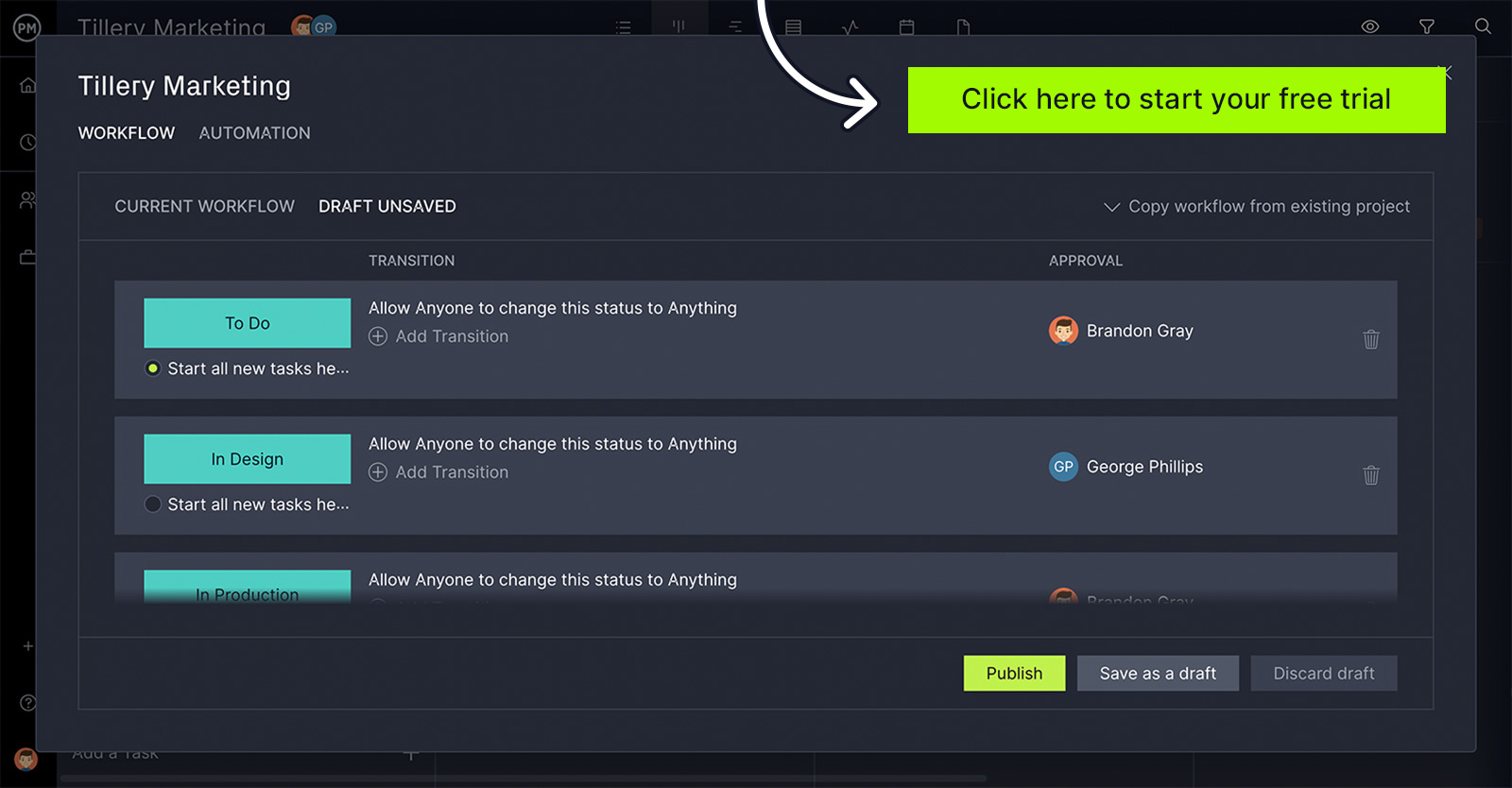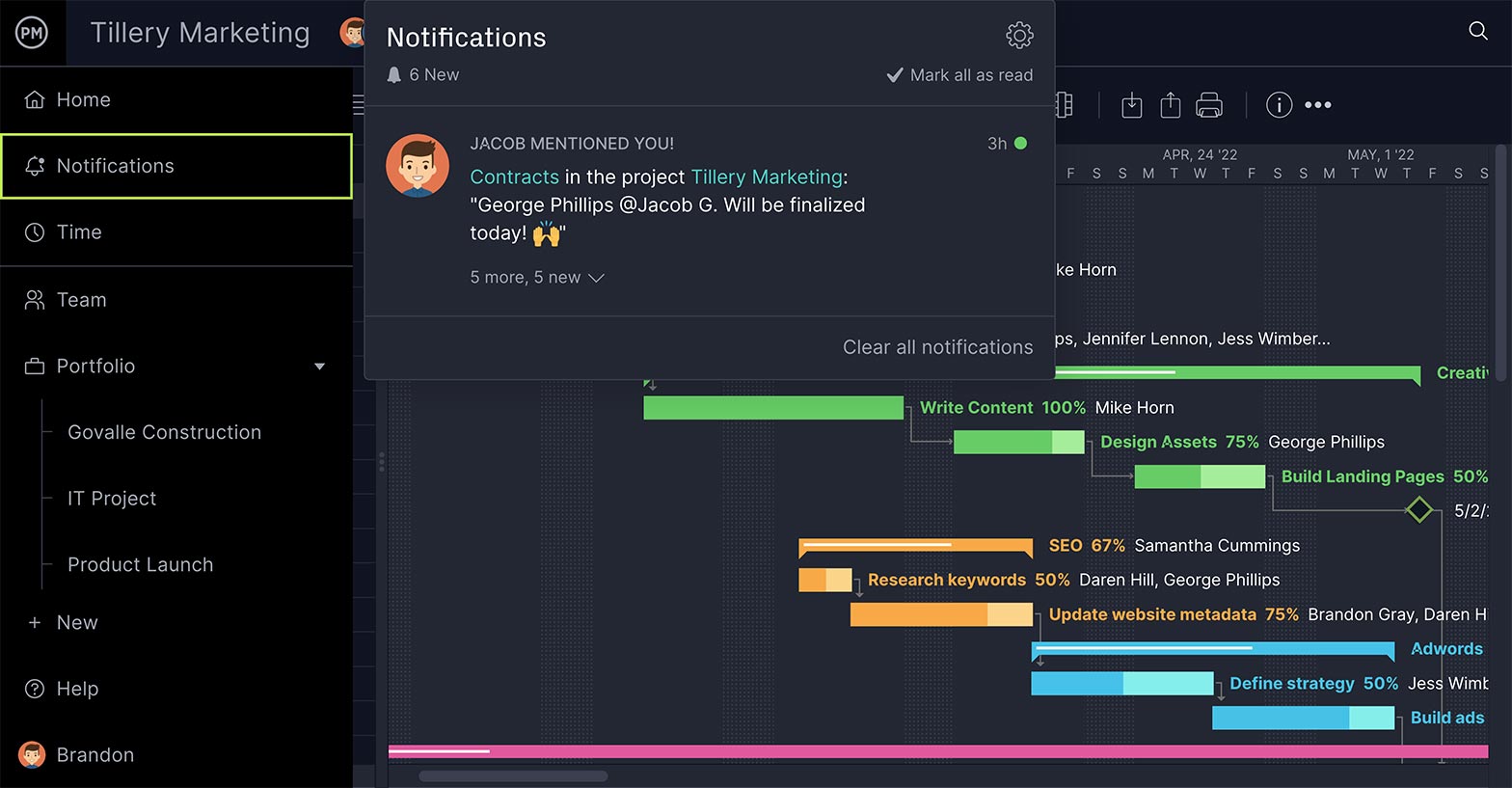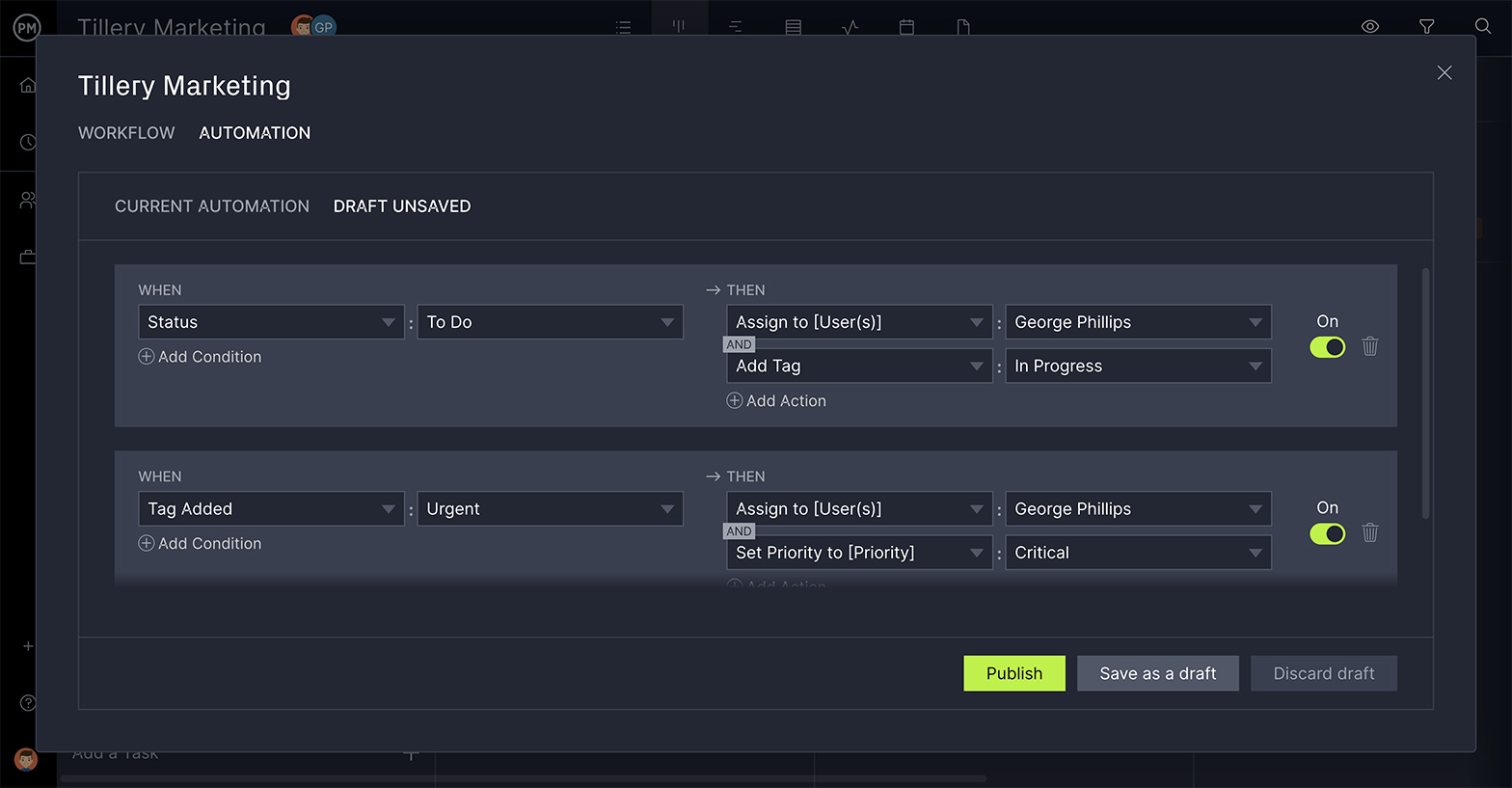Never overlook quality. If you get your deliverables completed on time but not up to the expectations of your stakeholders, you’re in trouble. An approval workflow can help ensure quality and it can even streamline processes when it’s part of a larger automated workflow.
There are different types of approval workflows, and not all are automated. After learning the definition, you can choose the one that will be best for your processes. Let’s take a look at what an approval workflow is and how automating approval workflows can help you work better and more efficiently.
What Is an Approval Workflow?
An approval workflow is a way to route something to an individual with the authority to move that item to the next stage in production. It’s part of a workflow that can be done manually or automatically. This helps ensure quality through the pipeline but also avoids backlogs on needed approvals.
The logical sequence of tasks is interrupted by an approval workflow in that the work stops until that task has been approved by the designated person. Automating workflows reduces bottlenecks and boosts efficiency, which improves workplace productivity.
The person with authority to approve work is usually the direct manager of whatever team is doing that work, but it can also be a quality assurance person or a cross-department manager depending on the process. There can be many or few approvals in the workflow depending on the scope of the product and organization.
By automating tasks and adding approval workflows, businesses can help teams work more productively while making sure that the quality of the work remains at a high standard. ProjectManager is online software that automates workflows and has task approval settings to streamline work. Add task approvals to your custom workflow or alongside automation to set up an approver before statuses can be updated. Get started with ProjectManager today for free.

Types of Approval Workflows
There are many different types of workflow structures but we’ll start with a task submission portal. This is where a document, purchase order or some sort of task is submitted so a stakeholder, manager or approver can sign off on it.
That leads to defining who those approvers are in the workflow. For example, many software tools with automation have a way to grant a specific person the right to edit or view or administer the submission.
The approval workflow usually has a deadline to avoid backlogs, bottlenecks and delays. Often when submitted for approval, the task will trigger a notification to alert the approver that the work is ready for their review.
There are various types of approval workflows, each employed to provide greater efficiency for organizations’ processes. They allow the work to continue moving forward without delay while not neglecting the quality of the work that passes through an approval workflow. There are three main types of approval workflows.
1. Process Approval Workflow
This process of approval is employed when working with predictable and repeatable tasks. This workflow is best used in processes where team members know the result they want to achieve and have a clear path to reach that goal. For example, in document approval, the process approval workflow is commonly employed.
2. Project Approval Workflow
If you require a more flexible workflow, you’ll likely use a project approval workflow. This workflow is also suitable for tasks with defined goals, however, unlike a process approval workflow, the path to achieving these goals isn’t clear. This approval workflow is often used in creative projects as the end is known but how to get there is more collective improvisation. Take, for example, marketing campaigns, which have specific goals and must attain key performance indicators (KPIs), but how those KPIs are reached isn’t clear and may take multiple attempts.
3. Case Approval Workflow
Some workflows have no clear path. In such a workflow, you’d apply a case approval workflow. This is an ideal workflow when the goal isn’t defined when the team starts its work but comes into clear focus as they work through additional information in the process of working. To better understand a case approval workflow, think of an insurance claim. The outcome of an insurance claim isn’t clear until more information is gathered as it moves through its process.
Automating Approval Workflows
As mentioned, approval workflows can be done manually or the process can be automated. In the latter case, automating approval workflows move items through the workflow by triggering a response once a certain action is completed.
Manual approval processes are problematic. This can cause conflicting feedback, lack of clarity in terms of who has authority when there are multiple reviewers, miscommunication of goals, too many revisions, missed deadlines and more. Automated approval workflows can avoid those speed bumps and keep workflows moving smoothly forward.
Automating approval workflows ensures the process has accountability and stays productive. This is something organizations of any size can benefit from. But first, the steps of a workflow must be clearly defined. Consider how submissions are requested, the criteria that must be met for the task to get approval, who those approvers are throughout the workflow, the route of submissions after approval or rejection, etc.
Benefits of Approval Workflow
The main benefit of using an approval workflow is that it streamlines your processes. It improves efficiency by moving items faster through the pipeline and results in fewer mistakes by defining the steps of that workflow, approval and ensuring everyone on the team is focused on their work.
It also makes sure that the item has been properly approved and that the approval has been promptly delivered. This helps teams meet their deadlines whether the task has one or multiple approvers.
There are also fewer errors when working with an approval workflow. Automation makes sure that approvals only happen when the criteria for approvals have been met. That means fewer errors get through that’ll have to be repaired later causing delays. This saves time and avoids costly and frustrating corrections.
Automation is also a way to improve communication in terms of tracking the task status and ensuring the team is aware of updates or pending approvals. This type of transparency in the process helps avoid misunderstandings that further delay the process.
Related: Free Communication Plan Template for Word
Bottlenecks are common issues in workflows and cause delays and frustration. Approval workflows reduce these costly blocks through automation. For example, if there are many approvers on a task, the automated approval workflow can be set up to send all the approvers a request to move the task forward faster.
Another plus is that automation leads to greater consistency, which is a way to streamline processes. It ensures that anything that’s automatically approved has met the criteria and policy of the organization. Automating this process speeds up the workflow as manual reviews are no longer required.
Best Practices for Approval Workflow
The first and possibly most important aspect of any approval workflow is making sure you’ve chosen who has the authority to make approvals. The whole process rests on this decision. Even in automated approval workflows, the approver is the safeguard against anything that doesn’t meet your approval criteria.
Automation is suggested, especially when dealing with multiple approvers. As noted, it can send approval notices to all approvers at once. It’ll also help you identify redundancies in your workflow, which can be deleted to further streamline the process.
Setting due dates helps avoid delays, not just for the task to be complete, but for approval and feedback, too. To make sure these due dates aren’t lost in the shuffle, look for a tool that has automated notifications that send either emails or alerts in the application.
ProjectManager and Approval Workflows
ProjectManager is online project management software with workflow automation and task approvals. Create custom workflows and designate an approval for better task management. Approvals can be set to automate a specific action and streamline workflows for greater productivity.
Streamline Repetitive Tasks With Workflow Automation
The first step to approval workflows is clearly defining the phases of your work. Custom workflows help you set rules that direct the path tasks must take. They’ll also define the users who can change the status or move tasks forward. Custom workflows and task approvals can be automated by defining triggers that set forth certain actions. Set triggers for status, priority, progress and others that can assign a user, remove a user, set priority, process percentage and more.

Get Real-Time Notifications to Stay on Top of Approvals
In order to streamline workflows, approvers must know when a task has been sent to them for approval. Our notifications allow users to see these alerts in real time. They’re instantly sent to your inbox, but also create an alert in the software so you don’t have to leave the tool and interrupt your workflow. You can customize notifications to do more than just alert you when approvals are needed, but also when assigned to a task, progress updates, changes in due dates and more.

Another feature that helps you with workflow is real-time data, which informs better decision-making. Get a high-level view of the project with our live dashboard. There’s no configuration required, just toggle over to see your progress in terms of costs, time, workload and more. For more information, customizable reports focus on what you want to see. They can be easily shared with stakeholders to keep them updated.
ProjectManager is award-winning software that automates workflows and sets approval settings to keep teams productive by freeing them up from manual and repetitive tasks. Other features manage risk and resources to further keep you on track. Join teams at NASA, Siemens and Nestle who use our software to deliver success. Get started with ProjectManager today for free.


